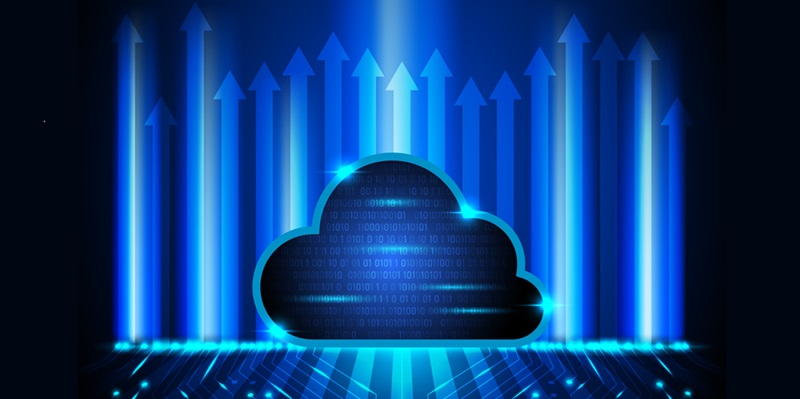In today’s digital era, where businesses rely heavily on technology, managing IT costs efficiently has become a top priority. Cloud computing and serverless architecture are two innovative approaches that have revolutionized the way businesses handle their IT infrastructure. By leveraging these technologies, businesses can not only reduce their IT costs significantly but also enhance security and scalability. This article explores the benefits of cloud computing and serverless architecture and how they can help businesses optimize costs while ensuring data protection.
Reduction in IT costs through eliminating expensive hardware and software
Traditionally, businesses had to make substantial upfront investments in costly hardware and software. However, with cloud computing, these expenses can be greatly minimized. Cloud-based solutions are hosted on remote servers, eliminating the need for expensive on-premises infrastructure. Businesses can access these services over the internet, allowing them to reduce spending on hardware and software licenses.
Pay-as-you-go model for cost optimization
One of the key advantages of cloud computing is the pay-as-you-go model. Businesses only pay for the resources they use, enabling them to optimize their IT costs. This flexibility is particularly beneficial for small and medium-sized enterprises (SMEs) that may not have the financial capacity to invest in hardware and software upfront. With cloud computing, businesses can scale their resources up or down as needed, aligning their costs with their actual usage.
The easy scalability of cloud-based services
Cloud computing offers businesses the flexibility to scale their services seamlessly. Whether they need additional storage capacity, computing power, or bandwidth, cloud-based services can be easily scaled up or down based on the organization’s requirements. This scalability ensures that businesses pay only for the resources they actually need, eliminating unnecessary costs associated with underutilized infrastructure.
Running applications without dedicated servers
Serverless architecture is a paradigm shift in application development and deployment. It allows businesses to run their applications without the need for dedicated servers. Instead, the application logic is split into small, manageable functions, which are executed on demand. This eliminates the cost of maintaining and managing servers for businesses, as they only pay for the execution time of these functions.
Cost savings on hardware and maintenance
By adopting serverless architecture, businesses can significantly reduce hardware and maintenance costs. Since there is no requirement to purchase and maintain physical servers, organizations can save on upfront infrastructure expenses. Additionally, serverless platforms handle all server management and maintenance tasks, freeing up valuable time and resources for businesses to focus on more critical aspects of their operations.
Automatic scaling based on application needs
Serverless platforms offer automatic scaling capabilities, providing businesses with the advantage of seamless scalability. As the demand for an application increases or decreases, serverless platforms can dynamically allocate resources to match the needs of the application. This ensures optimal performance while controlling costs by automatically scaling up or down based on usage patterns.
Expertise and Security in Cloud Computing
Cloud-based services are typically hosted by third-party providers who specialize in managing IT resources. These providers have extensive experience and expertise, allowing businesses to leverage their knowledge instead of investing in building and maintaining their own IT infrastructure. This not only eliminates the need for hiring and training specialized IT personnel but also ensures that businesses have access to the latest technologies and best practices in IT management.
Backup and disaster recovery advantages
Cloud-based services are backed up by multiple data centers, ensuring high availability and disaster recovery capabilities. In the event of a hardware failure or natural disaster, businesses using cloud computing can be confident that their data is safe and accessible. These backup and disaster recovery advantages provide added peace of mind for businesses, as they don’t have to worry about data loss or prolonged system downtime.
Data security measures in cloud-based services
Cloud providers implement stringent security measures to protect sensitive data. Encryption, access controls, and advanced authentication mechanisms are built into cloud-based services to ensure data confidentiality and integrity. Partnering with reputable cloud providers helps businesses benefit from the expertise and resources these providers have dedicated to maintaining the security of their infrastructure, reducing the risk of data breaches and cyberattacks.
Expertise and Security in Serverless Architecture
Similar to cloud computing, serverless platforms are managed by third-party providers with deep knowledge and experience in managing IT resources. By utilizing these platforms, businesses can focus on developing their applications and rely on the expertise of the provider to handle the underlying infrastructure. This eliminates the need for businesses to invest in infrastructure management, enabling cost savings and improved efficiency.
Advanced security measures for protecting sensitive data
Serverless platforms often incorporate advanced security measures to protect sensitive data. This includes encryption of data in transit and at rest, robust access controls, and comprehensive auditing capabilities. Serverless architectures follow best practices in security to ensure the highest level of protection for businesses and their customers’ data. By adopting a serverless architecture, businesses can leverage these security measures without the need for dedicated security personnel, further reducing costs.
Cloud computing and serverless architecture have emerged as game-changing technologies for businesses seeking to reduce their IT costs while enhancing security. The benefits of these approaches are numerous, including cost reduction through eliminating expensive hardware and software, optimizing costs through a pay-as-you-go model, and easy scalability of services. Additionally, businesses can leverage the expertise and security measures of third-party providers to ensure the protection of their data. In an increasingly digital world, cloud computing and serverless architecture offer businesses the opportunity to streamline their IT operations, save money, and improve overall efficiency. Embracing these technologies is not only a smart financial decision but also a strategic move that allows businesses to stay competitive in today’s fast-paced business landscape.

